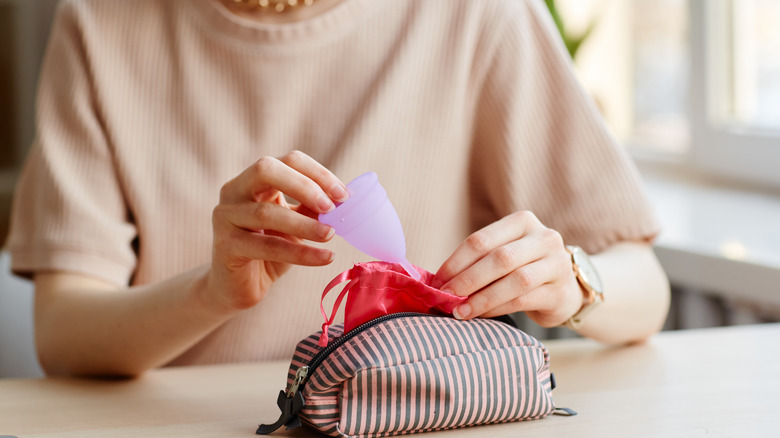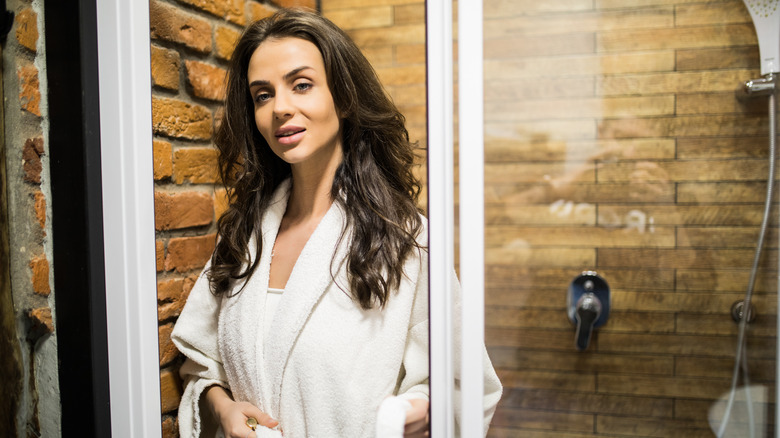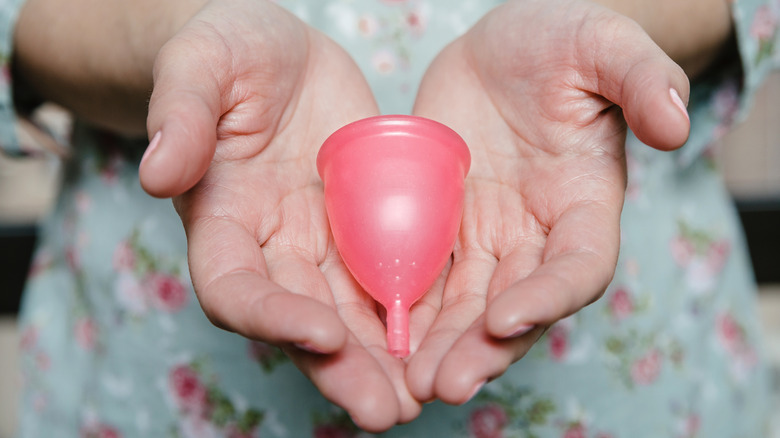Did You Know There Are Different Menstrual Cup Sizes? Here's How To Find Your Fit
You probably weren't expecting a homework assignment over the next 28 days, but if you're new to different menstrual cup sizes like we were, you'll thank us later. Your job is to figure out the height of your cervix over the course of your entire cycle. This in turn will help you choose the right size menstrual cup.
Choosing the right size is important. Although some manufacturers create cup sizes based on heavy or light flow, the sizing of many other cups has more to do with how low or high your cervix is and the strength of your pelvic floor.
Wearing the wrong size cup or the wrong firmness level can be uncomfortable enough to cause cramps, be difficult to pull out, or can leak. When you do finally wear the right size, you'll forget you're wearing a cup; you can walk, run, and swim as usual. If you're still cramping after using the correct cup, there are several exercises and movements that can put your cramps on pause.
How (and why) to find your cervix
If you're not already, we recommend you use a period tracker, even if you're not currently planning to have kids. It's great data to bring to a yearly gynecological appointment. It can help you track any PMS-like symptoms and irregularities with your period. This will help your doctor with any diagnoses or recommendations.
Once you've used the tracker for a couple of months and you're pretty certain you can predict when your cycle starts, start measuring your cervix starting the day before or day one of your period. Then measure again in the middle of your cycle, and towards the end.
Because your cervix's position can shift during your cycle, it's a good idea to get a sense of its lowest point. The cervix sits at the top of your vaginal canal. So what you want to do is wash your hands thoroughly each time, and insert your middle finger into your vagina. When it hits the ceiling, so to speak, you should feel an indent. That's the bottom of your cervix. Per Healthline, "If your finger has to go all the way in before you reach your cervix, you likely have a high cervix. But if you reach it at the first knuckle, it's likely low. In between is average." A high cervix means you'll need a longer cup.
What your age and kids have to do with cup size
Although this is a general guideline, women under 30 will usually use a smaller cup, and those over 30 might use a larger size. There are even brands, like Juju, that sell cups specifically for teens. Another brand for teens is Saalt.
Some menstrual cup brands mention a suggested age range for the cup size because our pelvic floor muscles weaken as we get older. A weakened pelvic floor can lead to disorders, like prolapse and incontinence. In that case, a firmer cup is recommended. One brand with firmer cups is EcoDreams.
If you've had a child (or a full-term pregnancy), once again, your pregnancy weakens those pelvic muscles and you might need a larger cup. Remember, no matter what size you are or which brand you use, once you get the hang of it and feel comfortable, you are reducing waste, helping our environment, and spending less money.
Other factors affecting cup size
When we're talking about cup size, we're referring to two dimensions: How wide the cup is, and how long. For obvious reasons, you won't be able to return a cup if it's the wrong size — that's why we recommend you measure how low your cervix is so you don't buy a cup that's too long.
Again, as a general guideline, if you're over 30 or have had a full-term pregnancy, opt for the wider cup. Another factor is your flow — if you're someone with an especially heavy flow, consider a larger size cup. Cups that specifically accommodate a heavier flow are Ruby Cup, Saalt Cup, Diva Cup, Pixie Cup, Super Jennie Menstrual Cup, and Lena Cup. Some people also wear period pants to ensure no leaks.
If you regularly take Pilates and yoga classes or perform regular Kegel exercises, you probably have a strong pelvic floor and may find a smaller cup is best. It will take a bit of experimentation, but once you find the right fit, you're golden.



